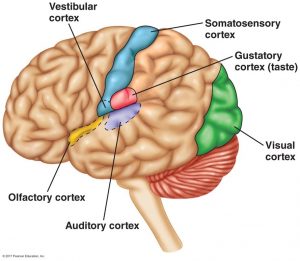Lab 5: Sensory System

Abstract: The nervous system is divided into two: the central nervous system and the peripheral nervous system. The central nervous system consists of the brain and the spinal cord, whereas the peripheral nervous system consists of neurons. The central nervous system receives sensory information and visceral information. The peripheral nervous system provides communication between the central nervous system and the organs of the body. The peripheral nervous system is divided into two branches: the afferent branch and the efferent branch. Neurons from the afferent branch are carrying sensory or visceral information from the organs to the central nervous system and the efferent branch carrying information from the central nervous system to effector organs. The sensory system with the use of sensory receptors help us detect information from your surroundings and transfer this information to our brain. The sensory systems include the somatosensory system and the special senses. The somatosensory system is associated with skin receptors and limb orientation. The special senses include vision, hearing, balance and equilibrium, taste, and smell. In this exercise, we will focus on sensory systems involved in how we perceived the world around us. The skin, mouth, eyes, and nose contain nerve cells called sensory receptors. When these receptors are triggered, these receptors send information to the brain, where the information of the stimuli (nerve signals) will be interpreted.
